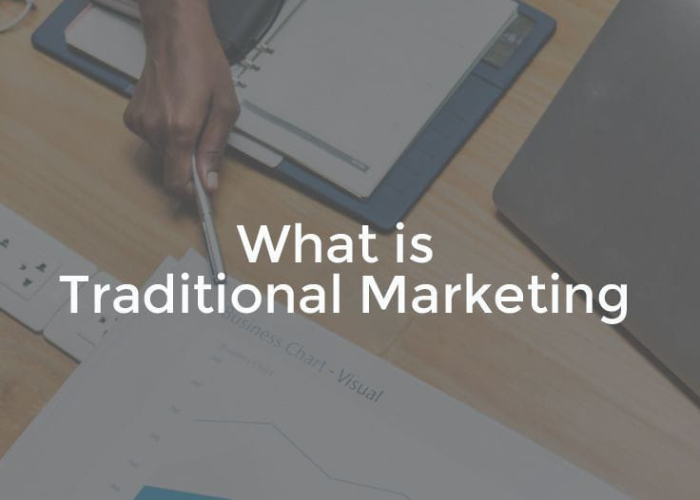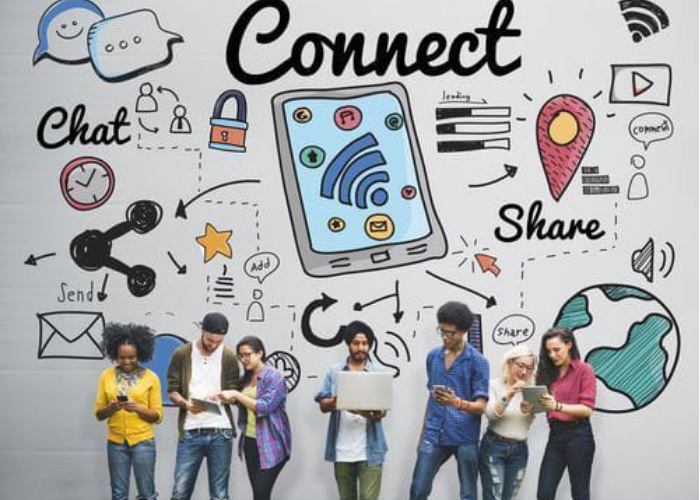
Comparison of Traditional Marketing and Digital Marketing And of course, when it comes to business, there is no complete without the word “MARKETING”; marketing is definitely a vital part when it comes to business for growth, brand building, and customer engagement. In the last few years only, the market has significantly more growth due to the emerging digital technologies. Let us quickly understand how the traditional marketing differs from digital marketing and compare their strategies, benefits, challenges and overall effectiveness in this blog.
Table of Contents
Toggle*Introduction
At its core, marketing is all about finding your audience at right place and right time. As a result, you must meet them where they are already spending a significant amount of their time – on the internet. Throughout the years, though, traditional marketing continues to have an important place in the market, especially in respect to certain type of businesses and audiences as well. Understanding both traditional and digital marketing can help businesses develop a comprehensive marketing strategy to get the most out of reach and impact.
*What is Traditional Marketing?

Traditional marketing also known as offline marketing or out-of-home (OOH) is the oldest form of marketing that offers selling strategies to a mass media.
Traditional marketing is what we call the old marketing methods used before the advent of the internet-based marketing techniques. These include various offline advertising and promotional methods such as:
- Print Advertising : Newspapers, Magazines, Brochures, Flyers
- Broadcast Advertising : TV and radio commercials.
- Direct Mail : This consists of catalogs, postcards and newsletters that are sent through postal
- Outdoor Advertising : Billboards, posters, and transit ads.
- Telemarketing : Direct calls to
*Traditional Marketing - Key Features
1 . Execution ( Print Ads) Traditional marketing is something that you can touch & feel.
2 . Local – newspaper, local TV, Radio (Broad Reach)
3 . Established : Over decades demonstrating effectiveness
4 . Limited Interaction : typically a one-way conversation
*What is Digital Marketing?

There is also digital marketing, which is marketing that takes place via the internet or electronic device. Businesses use digital channels such as search engines, social media, email, and their websites to connect with current and prospective customers. There are a few key cruxes of digital marketing.
- Search Engine Optimization (SEO) : Enhance website visibility on search
- Content Marketing : Creating Significant Content to Gain and Retain an Audience
- Social Media Marketing : Social media platforms are used to advertise products and
- Pay-Per-Click (PPC) Advertising : Advertising platforms such as Google AdWords , social media etc.
- Email Marketing : send targeted emails to potential customers, current customers, and so on
- Affiliate Marketing : This is working with other businesses / people to promote your own
*What Digital Marketing brings!
1 . Interactivity : It enables two-way communication with customers
2 . Targeted Reach : The potential to target different demographics and interests.
3 . Data-Driven : The use of a variety of tools including analytics and data tracking to be able to measure exactly how well a campaign is performing.
4 . Inexpensive : usually lower cost than conventional methods, which makes it especially desirable for small businesses
*Digital Marketing- Key Features
* Measurable Results > * Data-driven optimization, enables you to analyze your campaigns data real time and makes constant adjustments.
- Global Reach : Lets global audience know about
- Personalization : High customization of the marketing Resources Moderation Tool : Allows you to highly personalize your marketing messages.
- Cost Efficient : In many cases, the cost per lead is lower than that of the more traditional
*Problems with Digital Marketing
- High Competition : It is a digital space – hence saturated – that calls for one to think out of the box.
- Rapido Changes : Fast changing environment, newer tools and newer trends keep
- Privacy worries : Data privacy and the likes of GDPR
#Strategy

- Traditional Marketing : Promotion and others in the form of mass media with a wide Strategies are usually more extended, long-term and require heavy planning and
- Digital Marketing : Focuses on targeted reach & engagement This might not occur in a brisk and swiftness manner, as strategies are more dynamic and changes made may be quite fast, due to the real-time data.
#Cost

- Traditional Marketing : Often higher production and placement costs, especially with TV and print ads.
- Digital Marketing : Less costly also in some way and in some other ways like its PPC enable budget control through out the campaign and also allow budget adjust with the click while comparing to other traditional of having the radio, print, and tv which maintain the same budget from the start to the end of the
# Measurement
- Traditional Marketing : Success is often hard to measure and is dependent on proxy metrics such as sales lift and brand
- Digital Marketing : Delivers granular measurement & analytics for monitoring the campaign results like impressions, clicks, conversions and
# Audience Engagement

- Traditional Marketing : Has only one way of communication with fewer spaces for engagement.
- Digital Marketing : Allows for interactive engagement like social media, comments and direct messaging.
# Channels and Platforms

- Traditional Marketing : May involve offline channels such as newspaper, magazines, TV, radio, billboards, brochures, direct mail.
- Digital Marketing : Uses online channels including search engines, websites, social media, email, and mobile apps.
# Measurability
- Traditional Marketing : The caveat is that you can’t measure success in the same way you would an Recourse to trough indicators like circulation figures, viewership ratings or consumer surveys.
- Digital Marketing : Trackable through various analytics tools – typically real-time data that gives detailed campaign performance, engagement, and overall conversions (ex: Google Analytics, insights of social media).
# Interaction and Engagement

- Traditional Marketing : One-way communication, Minimal brand to audience interaction.
- Digital Marketing : Two-way communication, Facilitates comments, likes, shares, direct messages (live interaction and engagement).
#Flexibility and Adaptability

- Traditional Marketing : Less flexible, After an ad is published, you are unable to switch it Changes can also be quite an expensive and time-consuming process.
- Digital Marketing : Highly flexible, You can easily adjust campaigns with performance data. Real-time adaptable content and strategies.
# Reach

- Traditional Marketing : Mostly local or regional, though larger budgets can enable national campaigns.
- Digital Marketing : Global reach, Can reach target audience anywhere in the world Great, lets see a few more points that would distinguish traditional and Digital Marketing.
# Time to Market

- Traditional Marketing : Increased planning, production, and placement lead times Print ads, TV commercials, direct mail take time to create and distribute.
- Digital Marketing : Faster execution, An incredibly rapid turn around campaign creation and content generation and publishing.
# Environmental Impact

- Traditional Marketing : Typically seen as environmentally unfriendly as it involves printing, and paper, and transport for delivery .
- Digital Marketing : It also generally has a smaller ecological footprint because it leverages electronic, vs printing, resources .
#Audience Engagement

- Traditional Marketing : Passive engagement, Content Consumed From a
- Digital Marketing : Active engagement, User engagement such as comment, like, share and user-generated
# Consumer Trend Adaptation

- Traditional Marketing : Much longer lead and production time means that it is slower to respond to changes in consumer trends .
- Digital Marketing : Fast scalable for any new trends or changes of consumer React to real-time data points to Change Have change strategies in place.
*Blending Traditional and Digital Marketing
Top-performing companies have an integrated Digital and Traditional Marketing strategy that will expand your reach beyond conventional marketing methods. Your average businesses will combine the 2 like this:
1 . Unified Messaging : Ensure brand and message consistency both online and offline.
2 . Cross-Promotion : Engage in traditional ads to draw consumers into digital events and vice versa. In most cases, a TV ad that promotes a website or social media campaign.
3 . (Complementing Strategy) : Traditional Marketing for wide range and also the brand while Digital Marketing for narrowed and conversion.
* Example : Nike
Nike marketing strategy : – Traditional vs Digital Marketing Nevertheless, the natural impact of Traditional Methods such as TV commercials and print ads occur when it involves broad recognition and brand popularity, but the Digital strategies allure the customers to social engagement as well.
*Conclusion
Traditional AND Digital Marketing have their pros and cons. The right one being the one that fits your target audience, budget, and how closely you want these strategies to support your business goals. In a more traditional sense, Traditional Marketing is better for brand awareness and starting conversations, while Digital Marketing allows for targeting, user interaction, and measurable results. Knowing what each method brings to the table, businesses can develop a well- rounded marketing strategy that employs the strengths of both styles.
